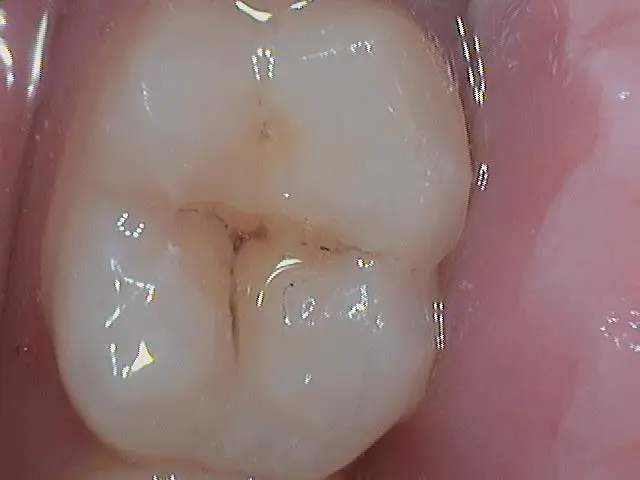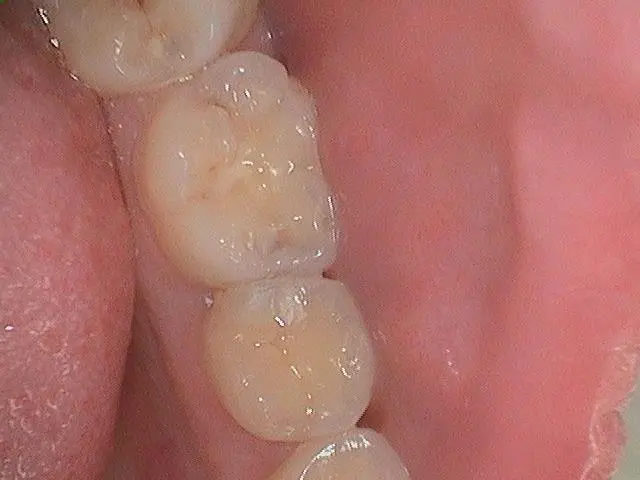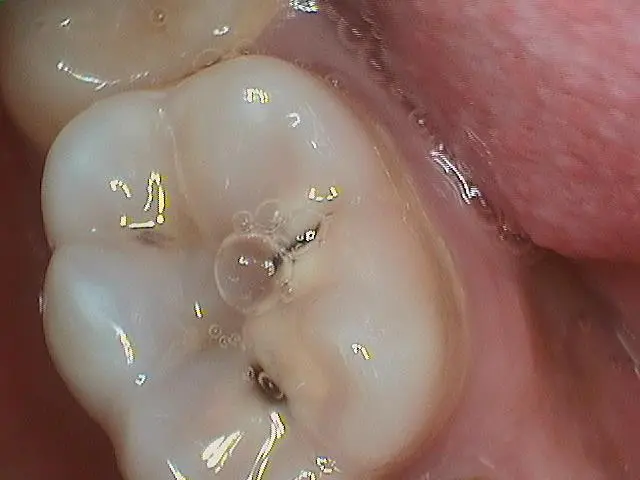Noticing a black spot on your tooth can be alarming and raise concerns about your dental health. Whether you discovered it during your morning routine or your dentist pointed it out during an examination, understanding what that dark spot means is crucial for your oral health and peace of mind.
Black spots on teeth are more common than you might think, affecting people of all ages. While they can sometimes indicate serious dental issues like tooth decay, they're not always a cause for panic. From harmless staining to bacterial buildup, various factors can create these dark marks on your teeth.
Understanding Black Spots on Teeth
A black spot on tooth surfaces represents a change in the normal white or off white color of dental enamel. These dark discolorations can appear as small dots, larger patches, or thin lines along the gum line. The appearance, size, and location provide important clues about their underlying cause.
Dental professionals classify tooth discoloration into three main categories: extrinsic stains (surface level), intrinsic stains (within tooth structure), and internalized stains (surface stains that penetrate deeper). Black spots can fall into any category, making proper diagnosis essential.
Primary Causes of Black Spots on Teeth
Tooth Decay and Cavities
The most serious cause of black spots is tooth decay, which occurs when acid producing bacteria break down tooth enamel. Early decay often appears as white or brown spots, but as the process progresses, these areas turn black. According to the American Dental Association, tooth decay is one of the most common chronic diseases affecting both children and adults.
Cavities form when plaque bacteria feed on sugars and starches from food, producing acids that erode enamel. The progression from initial decay to visible black spots typically takes months or years, depending on individual risk factors.
Dental Tartar and Plaque Buildup
Hardened plaque, known as tartar, commonly causes black spots near the gum line. When plaque isn't removed through regular brushing and flossing, it mineralizes and becomes firmly attached to teeth. This tartar absorbs stains from foods and beverages, turning dark brown or black over time.

External Staining from Foods and Beverages
Coffee, tea, red wine, cola, berries, and chocolate contain pigments that can stain tooth enamel over time. These stains typically develop gradually and may initially appear brown before darkening to black. Unlike decay-related spots, staining from external sources usually affects multiple teeth and follows consumption patterns.
Tobacco Use and Trauma
Tobacco products contain tar and nicotine that readily adhere to tooth surfaces, creating persistent black discoloration. Physical trauma to teeth can also cause internal bleeding and tissue death, leading to dark discoloration from within.
Medical Conditions and Medications
Certain antibiotics like tetracycline can cause permanent tooth discoloration when taken during tooth development. Conditions affecting nutrient absorption, such as celiac disease, can impact tooth development and make teeth more susceptible to staining. Iron supplements and excessive fluoride exposure can also contribute to black spots.
Diagnosing Black Spots on Teeth
Professional Examination
Accurate diagnosis requires professional dental examination using specialized instruments. Dentists use dental explorers to test the hardness of suspicious areas, distinguishing between hard stains and soft, decayed areas. Visual examination under proper lighting reveals details invisible to patients.
Modern dental practices utilize digital radiographs to reveal hidden decay and laser fluorescence devices to detect early stages of tooth decay. These tools improve diagnostic precision and help catch problems in their earliest, most treatable stages.

When to Seek Immediate Care
Seek immediate dental attention if black spots are accompanied by pain, sensitivity, swelling, or rapid changes in appearance. New black spots that appear suddenly or spots accompanied by loose fillings, cracked teeth, or gum bleeding should be evaluated quickly. Even painless black spots benefit from a professional evaluation.
Treatment Options for Black Spots
Decay Related Treatment
When black spots result from tooth decay, treatment focuses on removing decayed material and restoring tooth structure. Small cavities require simple dental fillings using tooth-colored composite materials. Larger areas may need dental crowns, and advanced decay affecting the nerve requires root canal treatment.
Professional Cleaning and Whitening
Professional dental cleanings effectively remove tartar buildup causing black spots along the gum line. External staining often responds well to professional teeth whitening treatments, which use stronger bleaching agents than over-the-counter products.
Advanced Restorative Options
For severe staining or extensive damage, cosmetic options include dental bonding, dental veneers, or crowns. These treatments provide immediate and dramatic improvement in tooth appearance while restoring function.
Prevention Strategies
Optimal Oral Hygiene
Preventing black spots begins with excellent daily oral hygiene. Brush teeth twice daily with fluoride toothpaste using proper technique, spending at least two minutes cleaning all surfaces. Daily flossing removes plaque from between teeth where toothbrushes cannot reach.
Dietary and Lifestyle Modifications
Limit consumption of staining foods and beverages. When consuming coffee, tea, or wine, use a straw to minimize contact with teeth. Rinse with water after consuming staining substances, and wait at least 30 minutes before brushing to prevent enamel damage.
Maintain a balanced diet rich in calcium and phosphorus while limiting sugary and acidic foods. Avoid tobacco products completely to prevent severe staining and health risks.
Regular Professional Care
Professional dental care plays a crucial role in prevention. Regular checkups every six months allow early detection and treatment of problems before they become visible. Professional cleanings remove plaque and tartar that home care cannot eliminate.

When Black Spots Indicate Serious Problems
Black spots accompanied by pain, swelling, or pus formation may indicate serious infection requiring immediate treatment. Fever, facial swelling, or difficulty swallowing warrant emergency dental care, as these signs suggest spreading infection.
Progressive decay shows as black spots that enlarge rapidly or develop sensitivity. Multiple new black spots appearing simultaneously may suggest systemic factors affecting oral health, requiring both medical and dental evaluation.
Home Care and Monitoring
Monitor black spots for changes in size, color, or associated symptoms between dental appointments. Taking photos can help track progression. Avoid attempting to remove spots with sharp instruments or harsh chemicals, as this can damage enamel and worsen problems.
Safe home practices include using fluoride toothpaste, rinsing with water after consuming staining substances, and following over-the-counter whitening product directions carefully. Any development of pain, sensitivity, or swelling should prompt immediate dental consultation.
Quick Takeaways
• Black spots have multiple causes ranging from harmless staining to serious tooth decay, requiring professional diagnosis
• Early intervention is crucial as prompt treatment prevents complications and reduces extensive procedures
• Professional dental care is essential for accurate diagnosis and appropriate treatment
• Prevention through excellent oral hygiene including twice-daily brushing, flossing, and regular checkups is most effective
• Lifestyle modifications matter including limiting staining foods, avoiding tobacco, and maintaining balanced diet
• Treatment options are available for all types of black spots, from simple cleanings to advanced restorative procedures
Conclusion
Black spots on teeth, while concerning when first discovered, are manageable conditions with proper professional care and attention to oral health. Understanding the various causes from tooth decay and tartar buildup to external staining empowers you to take appropriate action and seek timely treatment.
The key to successfully addressing black spots lies in prompt professional evaluation and appropriate treatment based on accurate diagnosis. Whether your black spots result from simple staining removable through professional cleaning, or more serious decay requiring restorative treatment, modern dentistry offers effective solutions.
Prevention remains your most powerful tool against black spots. Maintaining excellent oral hygiene, limiting exposure to staining substances, avoiding tobacco, and staying current with regular dental care significantly reduces your risk of developing these concerning marks.
Don't let black spots compromise your oral health or confidence. Early intervention addresses current problems and prevents serious complications requiring extensive treatment later. If you are located in Langley area contact us to schedule your comprehensive evaluation and learn about the best treatment options for your specific situation. Remember, addressing black spots promptly protects your smile and supports your overall health and well being.





